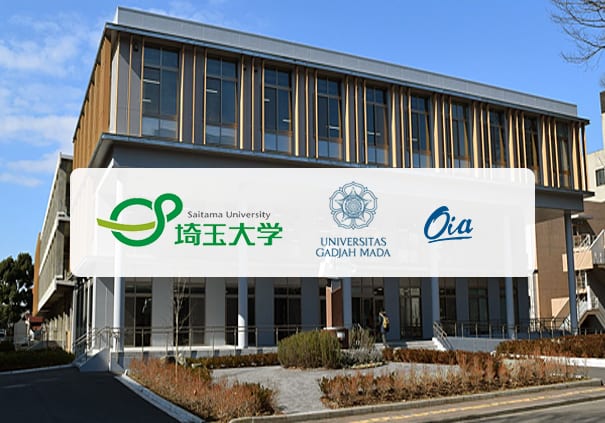
Warm greetings from Saitama University, Japan!
Saitama University is a Japanese national university located in a suburban area of Sakura-ku, Saitama City, capital of Saitama Prefecture in Tokyo Metropolitan Area.
The University has five faculties (schools) for undergraduate education -Liberal Arts, Education, Economics, Science, and Engineering- and four graduate schools -Cultural Science, Education, Economic Science, and Science and Engineering-, all offering programs leading to doctorates as well as master’s degrees. The total enrollment in the university is more than 8,500 with more than 500 overseas students pursuing undergraduate and postgraduate studies .
Every year, Saitama University welcome short-term exchange students with diverse cultural backgrounds and understandings from our partner universities. Students may pick Saitama because they like Japan and wish to learn about the country. However, exchange students will discover that Saitama University is the worlds’ gateway to Japan, and Japan’s gateway to the world.
Students will pursue regular courses or the Intensive Japanese courses depending on Japanese and English language proficiency.
Intensive Japanese Course
For students who wish to concentrate on Japanese language studies, the university’s Japanese Education Center provides comprehensive courses on the Japanese language. Students will be able to take courses in their fields of study in Japanese depending on progress of Japanese proficiency.
Courses offered in English
You can find the list of courses taught in English below. Please note that due to limited capacity, some classes might not always be available.
Course List Held In English 2020 FALL
Scholarship offered by Saitama University called JASO scholarship is not offered yet, so students who decide to apply must have sufficient financial support as requested in the requirements.
For more information regarding the program can be access through this link
Eligibility
- Undergraduate Students (S1) or Postgraduate Students (s2)
- Enrolled in Universitas Gadjah Mada during the program
- Be proficient in English. Non-native English speakers must have a score of at least IELTS 6.5, TOEFL ITP 550, TOEFL IBT 79 or equivalent)
Required Documents
- Curriculum Vitae
- Motivation Letter
- Official Academic Transcript record
- Application form (Application Form ) *
- Application for COE Fall 2021 (Application for CoE 2021 FALL) **
- Research/Study Plan
- A recommendation letter from an academic supervisor
- Letter of Enrollment from Faculty
- Letter of Nomination from Faculty (addressed to the Head of Office of International Affairs UGM)
- English Language Proficiency Certificate
- Copy of passport photo identification page
- Passport picture
- Confirmation Letter of Participation (download)
* Fill out by typing, Print it out and sign on necessary places, Scan the page and submit by PDF format
** Only the EXCEL file is acceptable and it also should be filled out by typing only. Do not change the file to any other files. Submission in EXCEL format ONLY.
Application Procedure
- Submit the aforementioned documents to UGM International Exposure Application Form: http://ugm.id/IntExposureApplication and no later than April 1st, 2021.
- OIA staff will evaluate your application. Once you are selected as Nominated Applicants, OIA will confirm your official nomination to Saitama University and you may proceed to the online application
- The FINAL decision from Saitama University
IMPORTANT NOTES:
- In the meantime, the students are required to keep the hard file of all documents until further notice by the Office of International Affairs.
- In case the faculty could not provide the letter of enrollment and nomination during this period, the official nomination through email from the faculty is acceptable. The official nomination could be delivered to head-oia@ugm.ac.id (cc to scholarship@ugm.ac.id)
- Application of outgoing mobility for spring/even semester in AY 2020/2021 will be processed but the implementation/execution will carefully consider the latest development of COVID-19 and government’s regulation

Recent Comments